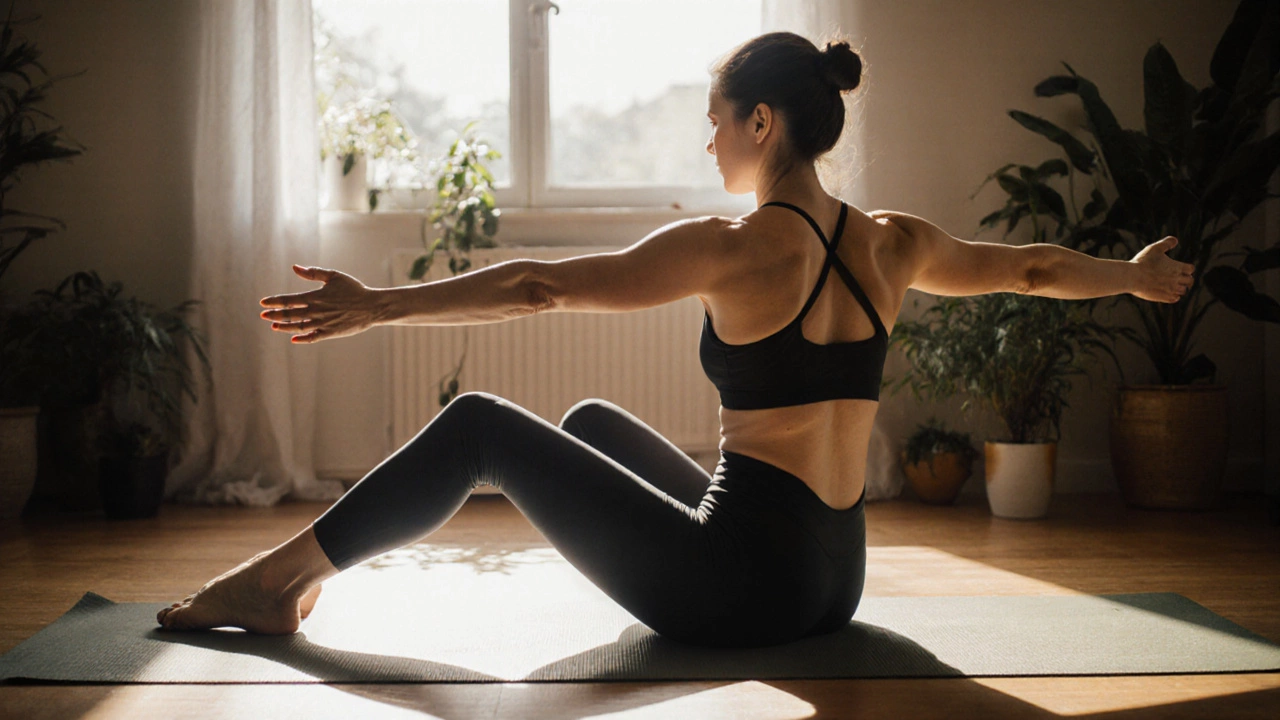Yoga Routines that Fit Your Life
Wondering how to fit yoga into a busy schedule? You don’t need hours on a mat to see real benefits. A 20‑minute routine can improve flexibility, strengthen muscles, and calm the mind. Below you’ll find simple daily flows and a step‑by‑step guide to a yoga‑only fitness plan that works whether you’re a total beginner or looking to up the intensity.
Quick Daily Yoga Routines
Start with a short sequence that targets the whole body. Begin in Mountain Pose for a few breaths, then move to Sun Salutation A (3 rounds). Follow with a standing forward fold, a gentle lunge with a twist, and finish with Child’s Pose for a minute. This routine takes about 15‑20 minutes and can be done in your living room.
Why it works: The flow warms up joints, stretches the back, and gets the heart rate up just enough to burn a few calories. Adding a few deep breaths improves oxygen flow to the brain, leaving you clearer for the day ahead. If you have extra time, add a plank hold and a few rounds of Bridge Pose to engage the core and glutes.
Consistency beats length. Doing this routine every morning or evening builds habit and gradually improves strength, balance, and stress levels. Set a reminder on your phone, roll out a mat, and stick with it for at least two weeks before judging the results.
Building a Yoga‑Only Fitness Plan
If you want to replace traditional gym workouts with yoga, focus on three key elements: strength, cardio, and flexibility. A balanced week might look like this:
- Monday & Thursday – Power Yoga: 45‑minute flow with a lot of standing poses, lunges, and arm balances. Aim for 5‑minute holds in Warrior II, Chair Pose, and Side Plank.
- Tuesday – Flow & Core: 30‑minute gentle flow followed by a 10‑minute core series (Boat Pose, Side Boat, and Dolphin Pose).
- Wednesday – Restorative: 20‑minute calming session using supported poses and long breaths to aid recovery.
- Friday – Vinyasa Cardio: Fast‑paced vinyasa that keeps you moving for 30‑40 minutes. Include jumps, high knees, and Sun Salutation B to get the heart rate up.
- Weekend – Choice: Pick a longer class, a hike with yoga breaks, or a yoga workshop you enjoy.
The goal is to hit each muscle group at least twice a week while keeping the heart working. You’ll notice increased stamina, tighter abs, and less joint pain compared to a typical weight‑lifting routine.
Tips for success: keep a yoga journal to note how long you hold each pose, any aches, and how you feel after the session. Small progress, like holding Warrior II for an extra 10 seconds, adds up quickly. Also, use props—blocks, straps, or a sturdy chair—to maintain proper alignment and avoid injury.
Whether you choose a quick daily flow or a full yoga‑only program, the key is to listen to your body and stay consistent. Start with the basics, add variety as you grow comfortable, and watch your fitness and mood improve without ever stepping into a traditional gym.

What Is the Best Yoga Pose to Lose Belly Fat?
Maeve Larkspur Nov 5 0No single yoga pose burns belly fat, but consistent practice with core-strengthening poses like Boat Pose and Plank, combined with good nutrition, can help reduce belly fat over time by lowering stress and building muscle.
More Detail
Why the Number 9 is Sacred in Yoga Routines
Maeve Larkspur Mar 12 0The number 9 holds special significance in yoga, believed to carry mystical and spiritual importance. This article explores why 9 is considered sacred in yoga practices, its connection to energy flow, and how it's incorporated into routines. Discover interesting facts about its symbolism and tips on using 9 for enhancing your practice. Understand the relevance of 9 in achieving balance and harmony in both body and mind.
More Detail